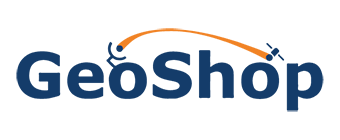
They provide farmers with the ability to implement Precision Agriculture practices.
They are connected to high-tech cameras and devices, meticulously monitoring diseases, pests, irrigation, and fertilization.
They perform the ‘difficult’ and ‘dangerous’ work efficiently and safely, opening up new horizons in the development of your business.
They provide the opportunity to transition to sustainable agricultural practices.
What is smart agriculture?
Smart agriculture is a revolution in the agricultural industry that contributes to guiding the actions required to modify and reorient agricultural systems for effectively supporting development and ensuring the safety of a crop in an ever-changing climate.
The main goal of smart agriculture is to increase agricultural productivity and consequently the income of the farmer.
What is precision agriculture?
Precise agriculture is a means of agricultural and farming management that relies on monitoring, measuring, and responding to cultivation conditions on a systematic basis. Precise agriculture refers to the way farmers manage crops to ensure their efficiency, such as water and fertilizer, resulting in maximizing productivity, quality, and performance. The term also encompasses minimizing pests, unwanted floods, and potential diseases.
Agriculture drones: What are they?
Agricultural drones are applied in agriculture to contribute to increasing crop production and monitoring their development. Sensors and digital imaging capabilities can provide farmers with a complete picture of the condition of a crop. As a result, this information can prove useful for improving crop performance. Agricultural drones allow farmers to have a complete overview of their fields from above. This imagery can reveal many issues such as irrigation problems, soil variations, pest infestations, and fungal infections. Additionally, a drone can inspect crops periodically for the farmer. On a weekly, daily, or even hourly basis, the images can show changes in crops over time, thus indicating potential ‘problem areas’. Having identified these issues, the farmer can proceed to improve the crops and consequently the production.
How do agricultural drones help?
Drones are used to observe crops, their texture, growth, the condition of pests, etc. They process these observed data using precision agriculture-based programs, and based on the analysis done by these programs, specialized drones perform tasks to optimize growth. The exclusive features of drones make the implementation of precision agriculture highly effective.
What are the benefits of using agricultural drones?
The integration of drone technology into precision agriculture opens up many possibilities. Below are some of the applications that make the integration of drone technology in precision agriculture very effective:
Irrigation equipment monitoring: Managing multiple irrigation points simultaneously is a rather complex process, especially for farmers who have large crops scattered in various locations.
Weed identification in crops: A weed map can be created by drones using the data collected from their sensors, allowing farmers to easily differentiate areas of high-intensity weed proliferation from healthy crops growing nearby, thereby improving the quality of the crops.
Assessment of crop health: Drones can identify bacteria, fungi, or diseases using infrared radiation transmitted frequently by sensors or thermal images and many other means, preventing the spread of diseases to other crops. It is a fact that with multispectral images, drones can detect diseases before they are visible to the human eye.
